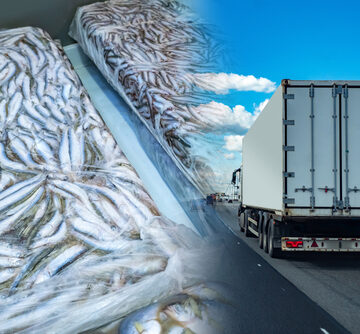Temperature excursions from a safe range reduce product shelf life and may even spoil goods during transit. Maintaining the integrity and quality of goods moved using refrigerated transport is paramount to preventing issues with the quality of goods upon arrival. Business stakeholders, from cold chain fleets to distribution centres and manufacturing facilities must follow best practice guidelines to ensure food safety at all times.
Preliminary Inspections
The first step in the refrigerated transport best practice guidelines is to perform a preliminary inspection of the transport refrigeration unit (TRU). Logistics managers should set pre-trip inspection requirements including removal of previous alarm codes or addressing or mitigating previous alarms. A visual inspection of the trailer should be conducted to make sure it is not physically compromised in any way. Finally, fuel levels must be checked to ensure the vehicle can make the journey using the allocated resources.
Pre-cooling the TRU ensures that cargo does not breach a safe temperature range during transport. Some air will escape the trailer during transport, so it is wise to set the starting temperature slightly lower than the recommended starting point. Pre-cooling must be done before goods are loaded onto the transport. The key is to keep the temperature of the trailer inside the product’s tolerance range to maintain integrity.
Best Practice During Refrigerated Transport
Fleets can optimise the refrigeration unit and the trailer to maintain desired temperature control during transport of temperature-sensitive goods. Doing so ensures product integrity and minimises losses from temperature variations. Controlling airflow is one of the most important practices in reducing the risk of temperature excursion. There are four primary mechanisms to improve airflow within the trailer.
-
Install Door Switches
It’s best practice to turn off the trailer before opening doors to load cargo. Hot air will be pulled into the trailer if the unit is switched on when the doors and open. Trailers with door switches will automatically turn off the refrigerator unit when the driver opens the doors. Therefore, door switches protect the shelf life of products throughout loading and unloading.
-
Stimulate Airflow and Circulation
Consistent airflow and circulation from the front to the back of the trailer helps to sustain correct temperatures throughout the trailer. An air chute should be implemented to distribute cold air to the back of the trailer before it cycles back around to the front to minimise hot spots surrounding temperature-sensitive cargo. Loading can help with airflow and circulation. In this regard, it is best practice to avoid stacking products near walls and doors to form a buffer between the temperature inside the cabin and that which is outside.
-
Use Telematics For Real-Time Temperature Updates
Telematics automated sensors notify drivers and fleet managers of temperature excursions in the trailer before products lose their integrity. Personnel receive alerts on their smartphones via Bluetooth systems or an app. With state-of-the-art telematics solutions, fleets monitor cargo integrity, improve fleet uptime, and manage fleet operating and maintenance costs more effectively.
Contact ShockWatch
To ensure your fleet’s shipments arrive intact without damage sustained by temperature excursions outside a safe range, contact ShockWatch today. We sell a range of temperature indicators and temperature recorders that, when used in conjunction with best practice guidelines, provide consistent, accurate reporting on the state of products during refrigerated transport. Visit our online store or call us on 1300 076 625 to place an order today.


